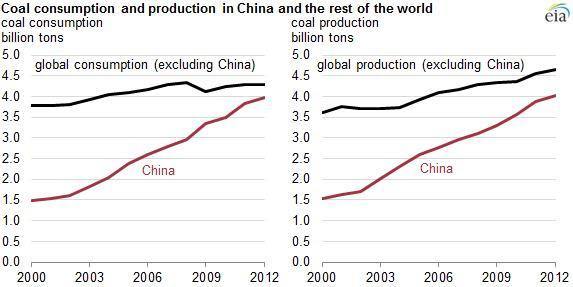City-dwelling Chinese may still be choking on smog, but amid all the haze, China may turning a corner in its fight on pollution. Top Chinese officials have hinted at the fact that China is working hard to achieve “peak” greenhouse gas emissions, which may come sooner than observers expect. “Peak pollution” refers to the point at which a developing country’s economy reaches a high enough level of production to ensure it will continue to grow even as it begins to work on reducing pollution rates. Despite off-the-chart air pollution levels in some cities, China has long been the world’s leading producer and user of clean energy. It already has the largest wind market in the world and its installed capacity has nearly doubled every year since 2005. Last year, China accounted for 45 percent of total new wind power installations worldwide. The government has ambitious plans to more than double its wind capacity by the end of the decade. By 2020, it plans to have installed a cumulative 200 gigawatts (GW) of wind, up from the current 92 GW. While China has dominated the wind industry for several years now, it has been a latecomer to the solar party. Chinese solar companies have been the biggest in terms of manufacturing and exporting cheap solar panels around the world, but domestic demand within China for solar has been slow. That changed in 2013, when China leapt to the front of the pack, installing 12 GW of solar and becoming the world’s largest solar market for the first time. This year will likely be even better as the government has set a target of 14 GW of solar. With the largest wind and solar markets in the world, China is clearly a clean energy powerhouse. Even so, China’s clean energy sector has experienced some serious growing pains. As of 2012, only 61 of the 75 GW of installed wind were actually connected to the grid. The remaining turbines were left idle even as China was claiming to be setting a global example for clean energy. Moreover, China often has to curtail some wind generation on certain days because the electrical grid has not been upgraded in order to handle the intermittency of wind. And for all of the hype surrounding China’s clean energy sector, especially its massive wind market, wind power still only represented 2 percent of China’s electricity sector in 2012. Meanwhile, coal-powered plants continue to belch out black smoke, accounting for three-quarters of the country’s electricity generation. In fact, China is by far the largest producer and consumer of coal. It burns through about as much coal as the rest of the world combined. Over the past 10 years, China alone accounted for 83 percent of the increase in global coal demand, which has more than offset its achievements in wind and solar installation. 





